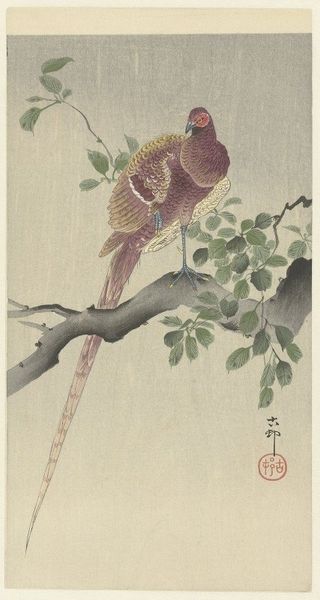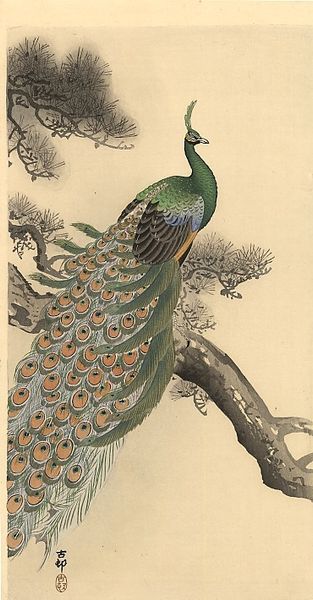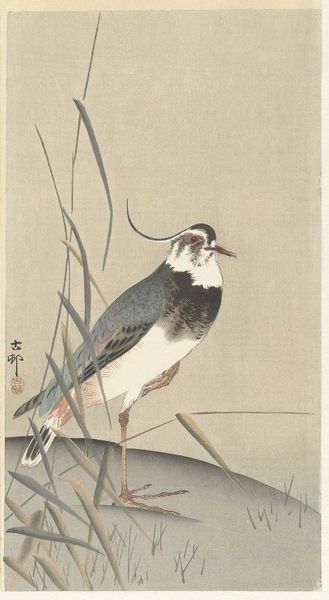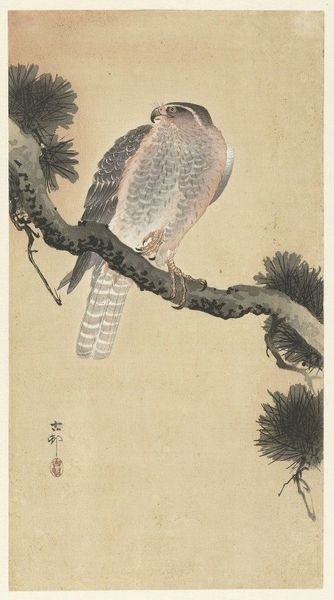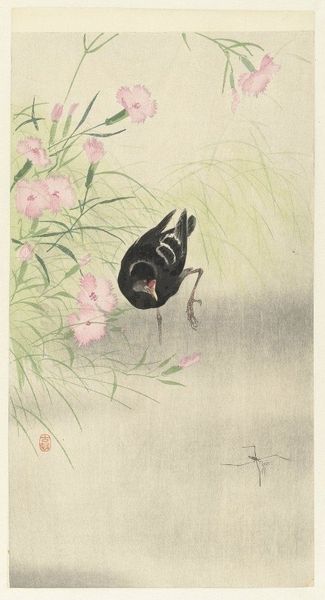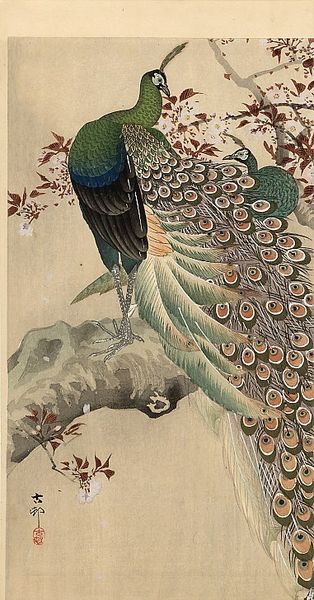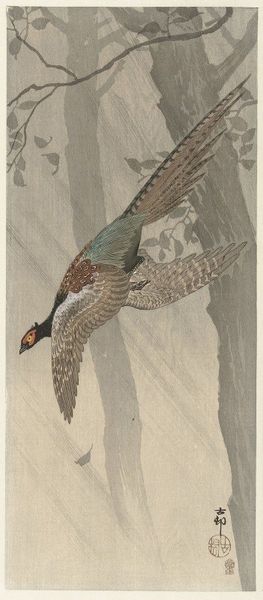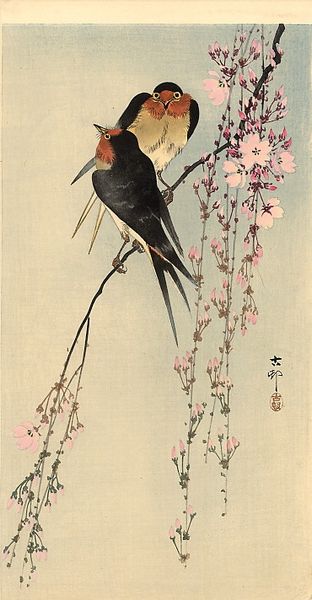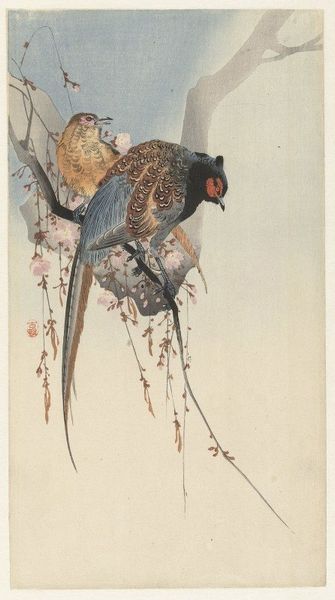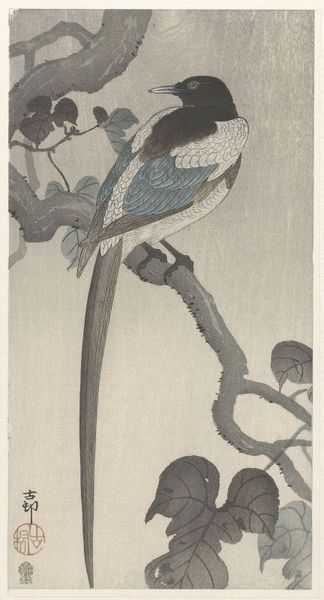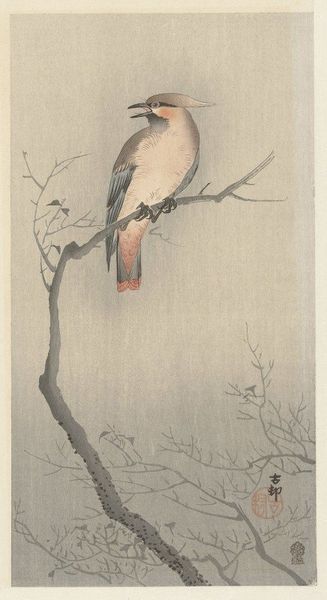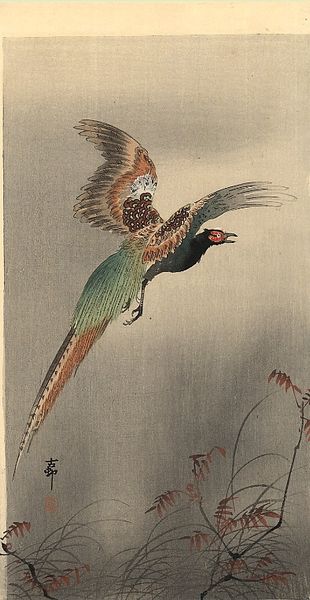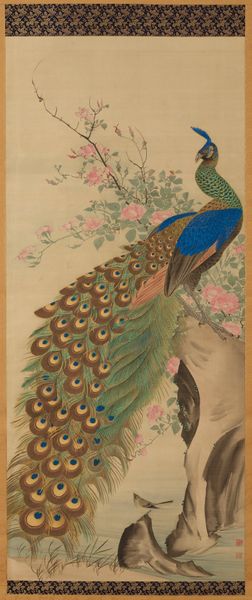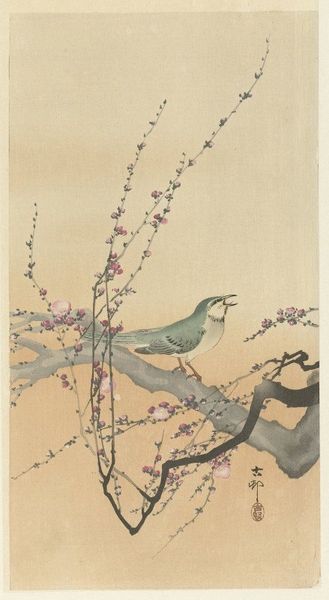
Copyright: Public Domain: Artvee
Curator: Let's discuss this stunning print, "Pair of Pheasants and Cherry Blossom," created between 1900 and 1930 by Ohara Koson. The medium here is woodblock print with watercolor, which was very common at this period of Japanese printmaking production. Editor: My first impression is one of serene observation. There's a gentleness here, the soft colours and slightly muted background give it a quiet, almost secretive quality. It feels like catching a glimpse of these pheasants undisturbed. Curator: Exactly. Koson, and many of his contemporaries, were highly aware of Western tastes, producing works very consciously tailored for the export market. This ukiyo-e, a landscape piece, relies on specific artistic practices deeply rooted in commercial strategies, considering how artworks function as commodities in cultural exchange. Editor: Fascinating how commerce shapes artistic expression. Looking closer, the intricate detail in the pheasant's feathers really jumps out, despite the overall muted palette. It's almost photorealistic in its depiction of textures, clashing brilliantly against the backdrop. I imagine the craftsman laboring meticulously for hours to carve out all these tiny feathers on the wooden blocks! Curator: Precisely! This labor-intensive woodblock printing was divided amongst specialists-- the artist designing, the woodcarver who transfers the design to wood blocks, the printer layering colors onto paper. The organization of these highly skilled labor roles demonstrates a fascinating shift, aligning art production more closely with craft. Editor: Makes me appreciate it even more knowing that teamwork! Plus, that compositional balance: The blossoming branch cascading downwards, grounding those glorious birds… The negative space lets my imagination roam, inviting inner dialogue. Curator: Ukiyo-e prints became affordable during this time as commercial printing technologies evolved, significantly impacting art consumption. Woodblock printing allowed for multiple copies and greater reach. Editor: All this makes me ponder its accessibility. Today it’s enshrined in museums. How do you think it moved into the cultural echelons? Was the commodification ever reversed or undermined in a museum context? Curator: Interesting considerations! Focusing on its history underscores ukiyo-e's evolving socio-economic importance within shifting global art landscapes. These artworks reflect larger transformations driven by cross-cultural dynamics influencing aesthetics and tastes across nations. Editor: To wrap things up, “Pair of Pheasants and Cherry Blossom" is more than just a pretty picture! Curator: Definitely, the beauty and its layered making encourages deep engagement and reflection on material, labor and economy.
Comments
No comments
Be the first to comment and join the conversation on the ultimate creative platform.
